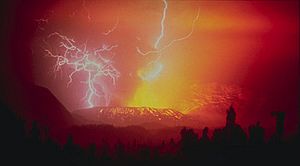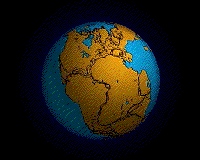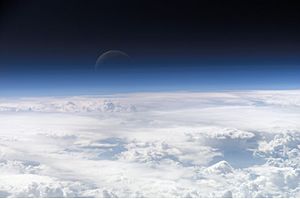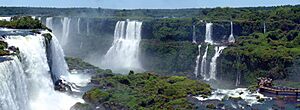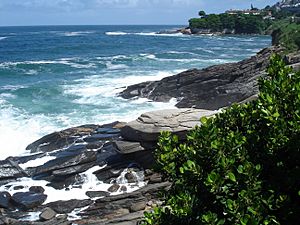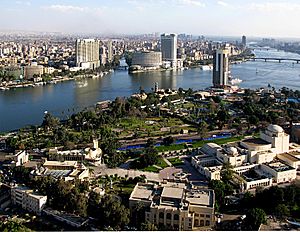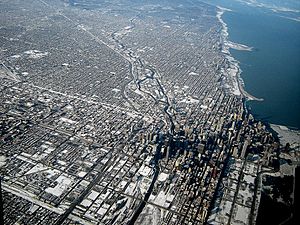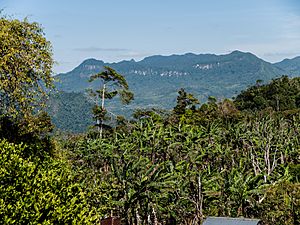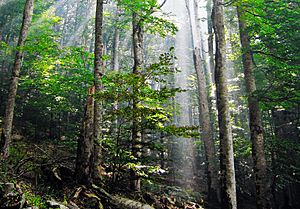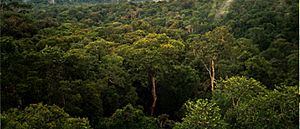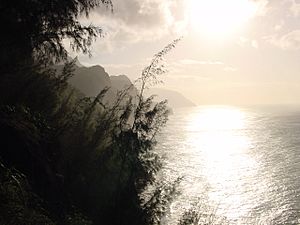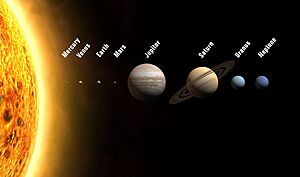Nature facts for kids
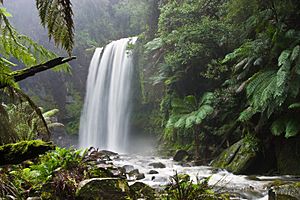
Nature means everything around us that wasn't made by people. Think of things like the sky, the weather, plants, animals, mountains, and even stars! Scientists study nature to understand how everything works. Things made by humans are called "man-made" or "artifacts."
Different sciences help us learn about nature. For example, biology studies all living things. Ecology looks at how living things and their environment interact. In its widest meaning, nature is the entire physical world.
Contents
Our Planet Earth
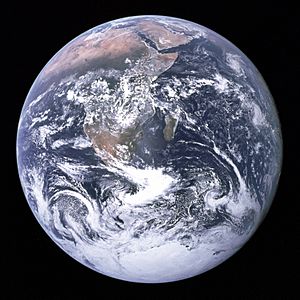
Earth is the only planet we know of that supports life. Many scientists study its natural features. Our planet is the third closest to the Sun in our Solar System. It is the largest rocky planet and the fifth largest planet overall.
Earth has two big cold areas near the poles. It also has two milder zones and a wide tropical area near the equator. How much rain or snow falls changes a lot depending on the place. About 71% of Earth's surface is covered by salty oceans. The rest is made of continents and islands. Most of the land where people live is in the Northern Hemisphere.
Earth has changed a lot over billions of years due to geological and biological processes. The Earth's outer layer, called the crust, is broken into huge pieces called tectonic plates. These plates move slowly. Inside Earth, there's a thick, gooey layer called the mantle. Deeper still is an iron core. This core has a solid inner part and a liquid outer part. The movement in the core creates Earth's magnetic field.
Life on Earth has greatly changed the atmosphere. Living things help create a balance that keeps the surface conditions stable. Even small changes in global temperature can have big effects on life and Earth's geography.
Earth's Geology
Geology is the study of the solid and liquid parts that make up Earth. It looks at what Earth is made of, its structure, how it behaves, and its history. Geologists study how rocks form, move, and change. This field is important for finding minerals and oil. It also helps us understand and prepare for natural disasters. Geology helps us learn about past climates and environments too.
How Earth's Geology Changes
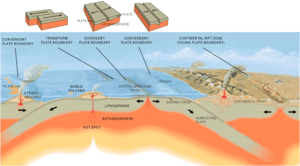
The geology of an area changes over time. New rocks are formed and placed, and Earth's movements change their shapes and locations.
Rocks can form in a few ways. Sediments (like sand or mud) can settle on the surface and later turn into sedimentary rock. Volcanic material, like ash or lava, can also cover the surface. Hot, melted rock (magma) can push up into existing rocks and cool, forming igneous rocks.
After rocks are formed, they can be bent or changed by heat and pressure. This often happens because of the movement of tectonic plates. Plates can crash into each other, pull apart, or slide past each other. These movements cause earthquakes, volcanoes, and mountain building.
Earth's History
Scientists believe Earth formed about 4.54 billion years ago from a cloud of gas and dust. The Sun and other planets formed at the same time. The Moon formed about 20 million years later. At first, Earth was a hot, melted ball. As it cooled, its outer layer became a solid crust.
Gases and volcanic activity created Earth's first atmosphere. Water vapor condensed, forming the oceans. This water likely came from ice delivered by comets. Scientists think that the first self-copying molecules, which led to life, appeared about 4 billion years ago.
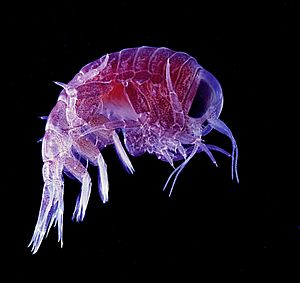
Continents formed, broke apart, and reformed over hundreds of millions of years. Sometimes they joined to create huge landmasses called supercontinents. About 750 million years ago, the supercontinent Rodinia began to split. Later, Pannotia formed and then broke apart about 540 million years ago. Finally, Pangaea formed and broke apart about 180 million years ago.
During a time called the Neoproterozoic era, much of Earth was covered in glaciers and ice. This is called the "Snowball Earth" idea. It happened just before the "Cambrian explosion" about 530–540 million years ago. This was a time when many new types of complex life appeared.
Since the Cambrian explosion, there have been five major mass extinctions. The last one happened about 66 million years ago. A meteorite crash likely caused the extinction of the dinosaurs and other large reptiles. But smaller animals, like mammals, survived. Over the last 66 million years, mammals became very diverse.
Millions of years ago, a type of small African ape learned to stand upright. This led to the development of humans. Humans then developed farming and civilization. This allowed us to change Earth faster than any other living thing. We have affected both other organisms and the global climate.
Today, we are in a period called the Holocene extinction event. It is the fastest extinction event ever. Some scientists believe that human actions could cause half of all species to disappear in the next 100 years.
Atmosphere, Climate, and Weather
Earth's atmosphere is vital for life. It's a thin layer of gases held around Earth by gravity. Air is mostly nitrogen and oxygen, with small amounts of water vapor and carbon dioxide. Air pressure gets lower as you go higher.
The ozone layer in the atmosphere helps block harmful ultraviolet (UV) radiation from the Sun. This protects life on the surface because UV light can damage DNA. The atmosphere also traps heat at night, which helps keep temperatures from getting too extreme.
Most weather happens in the lower part of the atmosphere. It helps move heat around the planet. Ocean currents also play a big role in climate. They move heat from warm areas near the equator to colder polar regions. This helps make winter and summer temperatures less extreme in milder zones. Without these currents, tropical areas would be much hotter, and polar areas much colder.
Weather can be helpful or harmful. Extreme weather, like tornadoes or hurricanes, can cause a lot of damage. Plants depend on seasonal weather changes. Sudden changes, even for a few years, can greatly affect plants and the animals that rely on them for food.
Climate is about long-term weather patterns. Many things affect climate, such as ocean currents, how much sunlight Earth reflects, greenhouse gases, changes in the Sun's brightness, and changes in Earth's orbit. History shows that Earth has had big climate changes in the past, including ice ages.
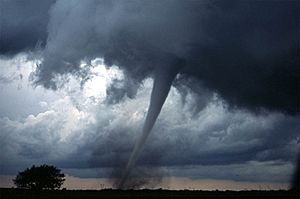
The climate of a region depends on things like its latitude (how far north or south it is). Different latitude bands have similar climates. These range from tropical climates near the equator to polar climates at the poles. Weather is also affected by the seasons. Seasons happen because Earth's axis is tilted as it orbits the Sun. This tilt means that different parts of Earth get more direct sunlight at different times of the year. When it's summer in one hemisphere, it's winter in the other.
Weather is a complex system that can change easily. So, accurate weather forecasting is only possible for a few days ahead. Globally, two main things are happening: temperatures are generally rising, and regional climates are noticeably changing.
Water on Earth
Water is a chemical substance made of hydrogen and oxygen. It is essential for all known life. When we say "water," we usually mean its liquid form. But water also exists as solid ice and gaseous water vapor (steam). Water covers 71% of Earth's surface.
Most of Earth's water is in oceans and other large bodies of water. About 1.6% is underground in aquifers. A tiny amount (0.001%) is in the air as vapor, clouds, and rain or snow. Oceans hold 97% of surface water. Glaciers and polar ice caps hold 2.4%. Rivers, lakes, and ponds hold 0.6%. A very small amount is inside living things and man-made products.
Oceans
An ocean is a huge body of salty water. It is a main part of Earth's water system. Oceans cover about 71% of Earth's surface. This is a continuous body of water, but we divide it into several main oceans and smaller seas. More than half of this area is over 3,000 meters (9,800 feet) deep.
Ocean water is usually about 3.5% salt. The major oceans are the Pacific, Atlantic, Indian, Southern Ocean, and Arctic Oceans. Smaller parts of oceans are called seas, gulfs, or bays. There are also salt lakes, which are landlocked bodies of saltwater not connected to the main oceans. Examples include the Aral Sea and the Great Salt Lake.
Lakes
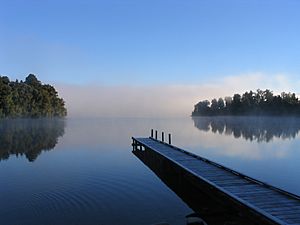
A lake is a body of liquid on a world's surface. On Earth, a body of water is called a lake if it is inland, not part of the ocean, larger and deeper than a pond, and fed by a river. The only other world known to have lakes is Titan, a moon of Saturn. Titan has lakes of ethane mixed with methane.
Natural lakes on Earth are often found in mountains, rift zones, or areas that have had recent glaciation. Other lakes are in basins that don't drain to the ocean, or along rivers. Many lakes exist in some parts of the world because of the messy drainage patterns left by the last Ice Age. All lakes are temporary over long geological times. They will slowly fill with sediment or drain out of their basins.
Ponds
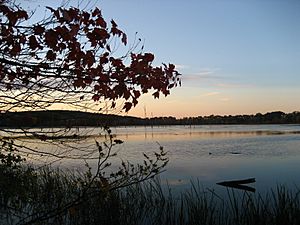
A pond is a body of still water, either natural or man-made. It is usually smaller than a lake. Many man-made water bodies are called ponds. These include water gardens, fish ponds for breeding fish, and solar ponds for storing heat. Ponds and lakes are different from streams because their water moves very slowly, if at all.
Rivers
A river is a natural watercourse, usually freshwater, that flows towards an ocean, lake, sea, or another river. Sometimes, a river flows into the ground or dries up before reaching another body of water. Small rivers can be called streams, creeks, brooks, or rivulets. There's no strict rule for what makes a river.
A river is part of the water cycle. Water in a river usually comes from rain or snow, groundwater, springs, and melting ice or snow from glaciers.
Streams
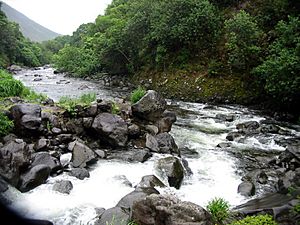
A stream is a flowing body of water with a current. It is held within a bed and stream banks. In the United States, a stream is usually less than 60 feet (18 meters) wide. Streams are important for the water cycle and for refilling groundwater. They also act as paths for fish and wildlife to move.
The area right around a stream is called a riparian zone. Streams are very important for connecting different habitats. This helps protect biodiversity during the ongoing Holocene extinction. Studying streams involves many sciences, like hydrology (the study of water) and aquatic ecology (the study of water environments).
Ecosystems
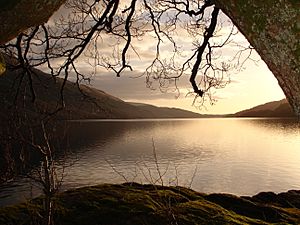
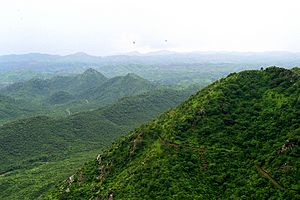
Ecosystems are made of many different parts that work together. These parts include non-living things (like soil, air, sunlight, and water) and living things (like plants and animals). The way an ecosystem is structured depends on these environmental factors. Changes to these factors will cause the ecosystem to change.
A key idea in ecosystems is that living organisms interact with everything else in their local environment. An ecosystem includes all the organisms in an area working with their physical environment. Energy flows through the system, creating a food structure and diverse life. Materials also cycle between living and non-living parts.
Within an ecosystem, different species are connected and depend on each other through the food chain. They exchange energy and materials with each other and their environment. The idea of a "human ecosystem" means that humans are also part of nature. All species depend on each other and on the non-living parts of their habitat.
A small ecosystem is called a microecosystem. For example, a single stone and all the life under it can be a microecosystem. A large ecosystem, or macroecosystem, might be an entire region with its rivers and lakes.
Wilderness Areas
Wilderness areas are generally places that humans have not changed much. You can find wilderness in nature preserves, national parks, and even in some undeveloped urban areas. Wilderness areas and protected parks are important for many reasons. They help certain species survive, allow for ecological studies, and provide places for people to find peace.
Some writers believe wilderness areas are vital for the human spirit and creativity. Some ecologists see them as a key part of Earth's self-sustaining natural ecosystem (the biosphere). These areas also protect unique genetic traits and provide habitat for wild plants and animals. It would be difficult or impossible to recreate these in zoos or laboratories.
Life on Earth
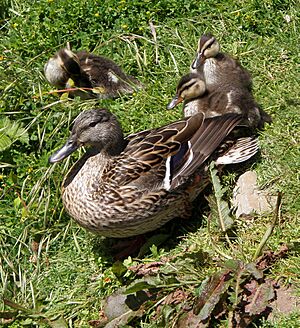
Scientists don't all agree on a single definition of life. But generally, living things are characterized by being organized, having a metabolism (using energy), growing, adapting, responding to their environment, and reproducing. Life can also be simply described as the state of being an organism.
Things common to all life forms on Earth (plants, animals, fungi, protists, archaea, and bacteria) are that they are made of cells. They are based on carbon and water, have a complex organization, use energy, can grow, respond to things, and reproduce. If something has these features, it's usually considered alive.
The biosphere is the part of Earth where life exists. This includes land, surface rocks, water, and air. Living processes within the biosphere also change it. From a broad view, the biosphere is the global system that includes all living things and their relationships. This includes how they interact with rocks, water, and air. The entire Earth contains over 75 billion tons of biomass (living matter).
More than 90% of all biomass on Earth is plant life. Animals depend heavily on plants for their survival. Over 2 million species of plants and animals have been identified. Estimates for the actual number of species range from several million to over 50 million. The number of species is always changing, with new ones appearing and others disappearing. However, the total number of species is currently declining very quickly.
Evolution of Life
We don't fully understand how life first began on Earth. But we know it happened at least 3.5 billion years ago. This was during a time when early Earth had a very different environment. These first life forms could copy themselves and pass on traits. Once life appeared, the process of evolution through natural selection led to many different life forms.
Species that could not adapt to changing environments or competition died out. However, we find evidence of these older species in fossils. Current fossil and DNA evidence shows that all living species can be traced back to the first simple life forms.
When basic plant life developed photosynthesis, they could use the Sun's energy. This created conditions for more complex life forms. The oxygen produced by photosynthesis built up in the atmosphere and formed the ozone layer. This ozone layer blocked harmful UV radiation. This allowed life to spread and colonize the surface of Earth.
Tiny Microbes
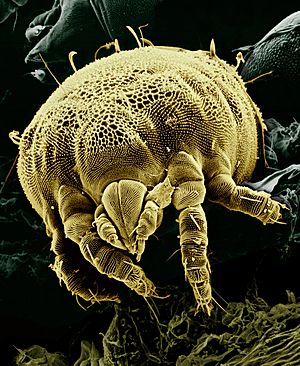
The first life forms on Earth were microbes. They were the only form of life for about a billion years until multi-celled organisms appeared. Microorganisms are single-celled organisms that are usually too small to see without a microscope. They include Bacteria, Fungi, Archaea, and Protista.
These tiny life forms are found almost everywhere on Earth where there is liquid water. This includes deep inside the Earth. They reproduce quickly and in large numbers. They can also change easily and survive in new environments, even outer space. Microbes are a very important part of Earth's ecosystem. However, some microorganisms can cause diseases in other organisms.
Plants and Animals
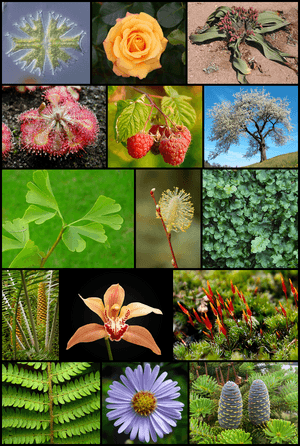
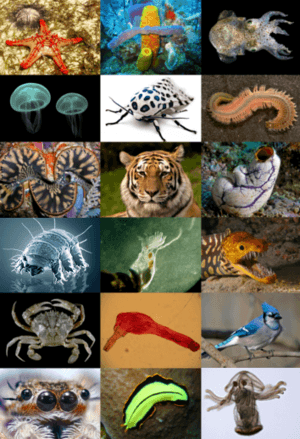
Long ago, Aristotle divided all living things into plants (which don't move much) and animals. Later, Carl Linnaeus created a system that put them into the kingdoms Plantae and Animalia. Since then, we've learned that some groups, like fungi and some algae, are different and have their own kingdoms. But people still often think of them as plants.
We can classify plants by where they grow, like "regional floras." This can also include "fossil flora," which are plant remains from long ago. People are often proud of the unique plants in their region. These plants can be very different around the world due to climate and terrain.
Regional plants are often divided into "native flora" and "agricultural and garden flora." The latter are grown on purpose. Some "native flora" were actually brought by people centuries ago and became part of the natural plants of that place. This shows how human actions can blur the lines of what we consider nature.
Another category for plants used to be "weeds." This term is less used by scientists now, but it shows how people often try to change nature by getting rid of plants they don't want. Similarly, animals are often grouped as "domestic," "farm animals," "wild animals," or "pests," based on their relationship to humans.
Animals have several features that usually set them apart from other living things. Animals are eukaryotic (their cells have a nucleus) and usually multicellular. This separates them from bacteria and most protists. They are heterotrophic, meaning they eat other organisms for food. This separates them from plants and algae. Animals also don't have cell walls, unlike plants, algae, and fungi.
With a few exceptions, animals have bodies made of different tissues. These include muscles, which help them move, and a nervous system, which sends and processes signals. Animals also typically have an internal system for digesting food. Animal cells are surrounded by a special outer layer that helps support their complex bodies and allows for movement.
Humans and Nature
Even though humans are a tiny part of all life on Earth, our effect on nature is huge. Because of how much we influence things, the line between what we call "nature" and "man-made environments" is often blurry. Even in the wildest places, the amount of natural environment free from human influence is shrinking fast.
Human technology has allowed us to use more natural resources. It has also helped reduce some risks from natural disasters. But despite this progress, the future of human civilization is still closely tied to changes in the environment. There's a very complex connection between using advanced technology and changes to the environment, which we are only slowly starting to understand.
Human-caused threats to Earth's natural environment include pollution, deforestation (cutting down forests), and disasters like oil spills. Humans have also contributed to the extinction of many plants and animals.
Humans use nature for fun and for making money. Getting natural resources for industries is a big part of the world's economy. Some activities, like hunting and fishing, are done for both food and enjoyment. Farming started around 9,000 BCE. From food production to energy, nature affects how wealthy countries are.
Early humans gathered wild plants for food and used plants for medicine. But most modern human use of plants is through farming. Clearing large areas of land for crops has greatly reduced forests and wetlands. This leads to a loss of habitat for many plant and animal species and increases erosion.
Beyond Earth
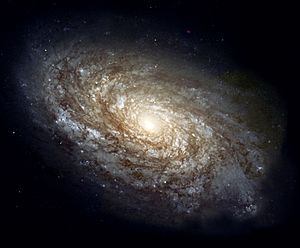
Outer space, or simply space, is the mostly empty area of the universe outside the atmospheres of planets and other space objects. There's no clear boundary between Earth's atmosphere and space; the atmosphere just gets thinner and thinner as you go higher. Space within our Solar System is called interplanetary space. Beyond our solar system, it becomes interstellar space.
Outer space has small amounts of different organic molecules, leftover energy from the Big Bang (when the universe began), and cosmic rays. There's also some gas, plasma, dust, and small meteors. Sadly, there are also signs of human life in space, like leftover parts from rockets and satellites. This "space debris" can be dangerous for spacecraft. Some of this debris falls back into Earth's atmosphere over time.
Although Earth is the only place in our solar system known to have life, evidence suggests that Mars once had liquid water on its surface. For a short time in Mars's history, it might have been able to support life. Today, most of the water on Mars is frozen. If any life exists on Mars, it's probably underground where liquid water might still be found.
The conditions on the other rocky planets, Mercury and Venus, seem too harsh for life as we know it. But some scientists think that Europa, one of Jupiter's moons, might have an ocean of liquid water under its icy surface. This could potentially host life.
Astronomers have also started finding planets outside our solar system that are similar to Earth. These planets are in the "habitable zone" around their star, meaning they could possibly have life.
Images for kids
-
South Penghu Marine National Park of Taiwan, showing the wonder of nature
-
A selection of diverse plant species
-
The first few hydrogen atom electron orbitals shown as cross-sections with color-coded probability density
See also
 In Spanish: Naturaleza para niños
In Spanish: Naturaleza para niños


